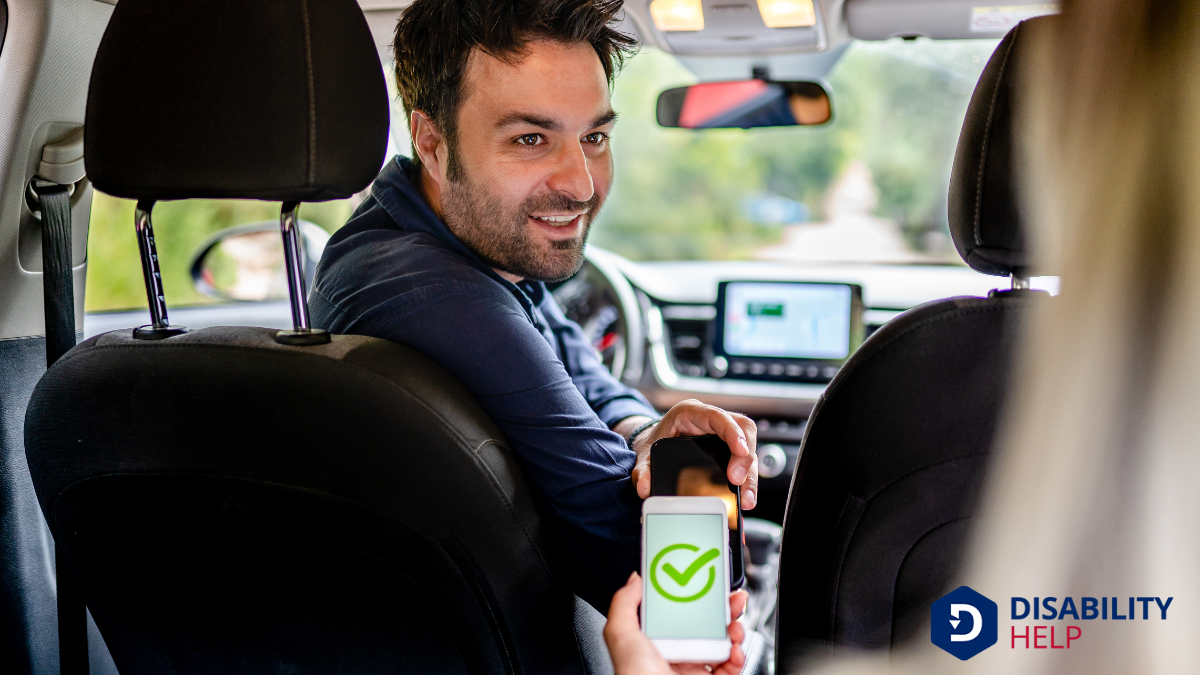Let's explore the concept of a rideshare voucher, a helpful tool for those of us with disabilities seeking accessible transportation. These vouchers act like prepaid cards for ridesharing services, easing travel costs and fostering independence. How exactly do we qualify, and what's the process for using them effectively? Join us as we uncover the steps and strategies to make the most of rideshare vouchers.
Key Takeaways
- Rideshare vouchers provide financial aid for transportation, supporting disabled individuals' mobility and independence.
- Vouchers are used in rideshare apps like Uber or Lyft, functioning like gift cards for ride payments.
- Accessible vehicle options are available, reducing transportation costs and enhancing disabled individuals' travel freedom.
- Eligibility involves disability documentation, income guidelines, and residency requirements to ensure fair access.
- Creating an account on rideshare apps is necessary to redeem vouchers and access benefits.
Understanding Rideshare Vouchers: A Brief Overview
Rideshare vouchers are an innovative solution that helps disabled individuals access convenient transportation options. We recognize how vital it's for everyone to have reliable transportation, and these vouchers bridge that gap.
They offer a more accessible and flexible way for disabled people to get around, which can make a significant difference in daily life. By providing financial assistance for rideshare services, these vouchers guarantee that transportation isn't a barrier to independence.
In our community, grasping the basics of rideshare vouchers is essential. They serve as a tool to promote inclusivity and equal opportunity, enabling disabled individuals to attend appointments, socialize, and engage with the world around them.
Let's explore rideshare vouchers further to see how they can empower and transform lives.
How Rideshare Vouchers Work: Key Features and Benefits

Understanding how these vouchers function can greatly enhance their effectiveness in empowering disabled individuals. Rideshare vouchers provide a convenient way to access transportation services. They work much like gift cards, providing a pre-determined amount towards rides. We can use these vouchers via apps, making it easy to book a ride when needed.
One key feature is flexibility. Vouchers can cover various types of rides, whether it's a short trip to a doctor's appointment or a longer journey. They often include options for accessible vehicles, ensuring everyone can travel comfortably.
Additionally, the cost is usually subsidized, reducing financial burdens. These benefits allow us to navigate our communities with greater independence, supporting an accessible lifestyle.
Understanding these features helps us maximize their potential.
Eligibility Criteria for Disabled Individuals
Let's explore the steps to qualify for rideshare vouchers.
We'll look at the disability verification process, income guidelines, and residency requirements.
Disability Verification Process
Before eligible individuals can access rideshare vouchers, they must navigate the disability verification process. This step guarantees that only those who genuinely need assistance receive it.
We begin by gathering necessary documentation, which may include medical certificates or proof of disability status from a recognized authority. It's important to have accurate and up-to-date information to avoid any delays or issues.
Next, we submit our documents to the relevant organization or platform offering the vouchers. They review our information to determine eligibility. Patience is vital here, as processing times can vary.
If approved, we'll receive confirmation and instructions on how to use our vouchers. Let's remember, this process guarantees fair distribution and helps maintain the integrity of the rideshare voucher program.
Income Qualification Guidelines
While guaranteeing fair access to rideshare vouchers, we must also consider income qualification guidelines that determine eligibility for disabled individuals. These guidelines are vital in identifying those who truly need financial assistance. Typically, income thresholds are based on a percentage of the federal poverty level, allowing us to target support to individuals with limited resources.
By examining household income, we confirm that those with the greatest need receive the vouchers.
Let's remember that these guidelines aren't meant to exclude but to prioritize. We should encourage transparency in the application process, making it easier for applicants to understand and meet the requirements.
Open communication and clear information can empower applicants, making sure they know what documentation is needed to demonstrate eligibility.
Residency Requirements Criteria
To guarantee that rideshare vouchers effectively reach disabled individuals who need them, we must establish clear residency requirements as part of the eligibility criteria.
By setting these criteria, we make certain that the assistance benefits those residing in the designated area, making the program more efficient and fair.
We need to confirm that applicants live in the area where the program operates. This might involve providing proof of address, such as a utility bill or lease agreement.
We should also consider how long an individual needs to reside in the area to qualify.
Step-by-Step Guide to Accessing Rideshare Vouchers
Let's explore how we can access rideshare vouchers, starting with understanding if we're eligible.
Once we've confirmed eligibility, we can follow a straightforward process to redeem the vouchers.
Together, we'll guarantee accessing these resources is as simple and efficient as possible.
Eligibility for Voucher Access
Although steering through the process of securing rideshare vouchers can seem intimidating, understanding eligibility is the first vital step. We must first confirm that we meet the basic criteria often set by local authorities or rideshare companies. Typically, these programs are designed for individuals with disabilities who face challenges with public transportation.
Our first step is to check if we possess any documentation that proves our disability status, such as a disability ID or a doctor's note.
Next, let's explore local programs or services that offer rideshare vouchers. Many cities and organizations provide resources for disabled individuals, so researching these options is important.
We'll also need to verify our income level meets any financial requirements, as some programs prioritize low-income individuals.
Steps for Voucher Redemption
Once we've confirmed our eligibility and gathered the necessary documentation, we can focus on redeeming our rideshare vouchers.
First, let's access the rideshare app or website linked to the voucher program. We'll need to create an account if we haven't already.
After logging in, navigate to the "Payment" or "Wallet" section where we can find an option to enter promo codes or vouchers. Carefully input the voucher code provided to us, ensuring there are no typos.
Once the code is accepted, it should reflect as a balance or discount in our account.
Now, we're ready to book a ride. Simply schedule our trip as usual, and the voucher will automatically apply to cover eligible costs during checkout.
Tips for Maximizing the Use of Rideshare Vouchers

To make the most of rideshare vouchers designed for disabled individuals, we need to approach their use strategically.
First, let's plan our trips in advance. By scheduling rides during off-peak hours, we can avoid higher demand and potential delays. It's also essential to track our voucher balance regularly, ensuring we don't run out unexpectedly. Keeping a list of frequently visited locations can save time and simplify future bookings.
Additionally, we should communicate our needs clearly to drivers. This includes any specific assistance or accommodationsModifications or adjustments in healthcare settings to support patients with disabilities. required. By doing so, we create a smoother experience for everyone involved.
Finally, let's explore multiple rideshare services. Different platforms might offer varying levels of accessibilityThe design of products, devices, services, or environments to be usable by people with disabilities...., so it's wise to try a few and determine which best meets our needs.
Addressing Common Challenges and Solutions for Disabled Users
Maneuvering rideshare services can present unique challenges for disabled users, but with the right strategies, many of these can be overcome.
First, we should verify that the app's accessibility features are activated, providing easier navigation. It's essential to communicate our specific needs to the driver ahead of time. This can include requesting assistance with a wheelchair or other mobility aidsDevices designed to help individuals move around more easily, such as canes, walkers, or wheelchairs....
We might encounter drivers unfamiliar with these needs, so patience and clear communication help bridge gaps. Additionally, knowing our rights under the Americans with Disabilities Act (ADA)A U.S. law that prohibits discrimination against individuals with disabilities in all areas of publi... empowers us to address any issues.
When problems arise, promptly reporting them to the rideshare company can lead to faster resolutions and improved future experiences. Together, we can create a more accessible system.
Conclusion
In summary, we've explored how rideshare vouchers can greatly enhance accessibility for disabled individuals. By understanding their features, benefits, and eligibility criteria, we can take advantage of these tools to promote independence and participation in social and professional activities. With our step-by-step guide and practical tips, we're confident that steering through the process will be smoother. Let's embrace these opportunities and overcome challenges together, ensuring everyone has the freedom to travel with ease.






